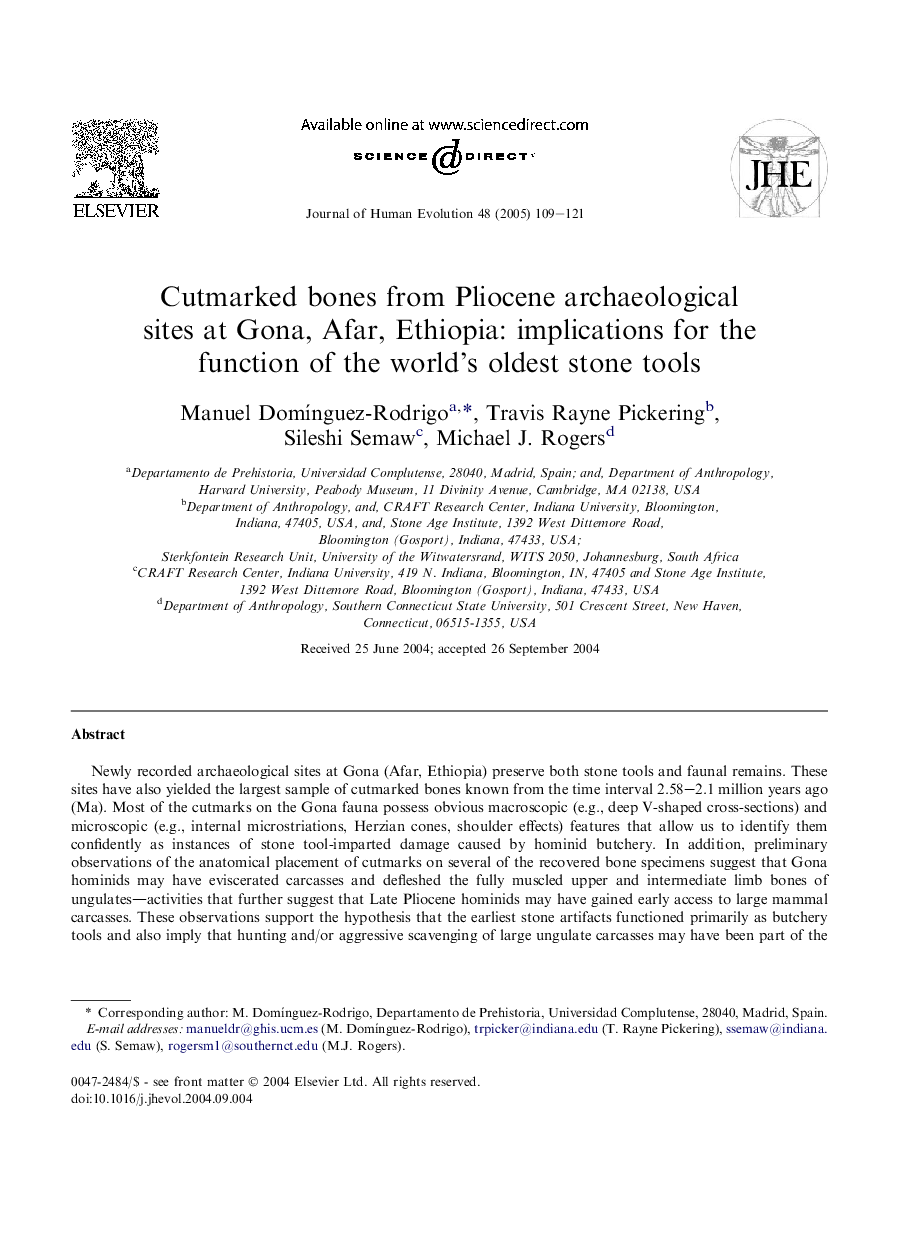| Article ID | Journal | Published Year | Pages | File Type |
|---|---|---|---|---|
| 9486039 | Journal of Human Evolution | 2005 | 13 Pages |
Abstract
Newly recorded archaeological sites at Gona (Afar, Ethiopia) preserve both stone tools and faunal remains. These sites have also yielded the largest sample of cutmarked bones known from the time interval 2.58-2.1 million years ago (Ma). Most of the cutmarks on the Gona fauna possess obvious macroscopic (e.g., deep V-shaped cross-sections) and microscopic (e.g., internal microstriations, Herzian cones, shoulder effects) features that allow us to identify them confidently as instances of stone tool-imparted damage caused by hominid butchery. In addition, preliminary observations of the anatomical placement of cutmarks on several of the recovered bone specimens suggest that Gona hominids may have eviscerated carcasses and defleshed the fully muscled upper and intermediate limb bones of ungulates-activities that further suggest that Late Pliocene hominids may have gained early access to large mammal carcasses. These observations support the hypothesis that the earliest stone artifacts functioned primarily as butchery tools and also imply that hunting and/or aggressive scavenging of large ungulate carcasses may have been part of the behavioral repertoire of hominids by c. 2.5Â Ma, although a larger sample of cutmarked bone specimens is necessary to support the latter inference.
Related Topics
Life Sciences
Agricultural and Biological Sciences
Ecology, Evolution, Behavior and Systematics
Authors
Manuel DomÃnguez-Rodrigo, Travis Rayne Pickering, Sileshi Semaw, Michael J. Rogers,
